In January 2023, Thanh and I went to Leuven to watch Thanh’s niece perform in a play called ‘Wezen‘ (‘Being‘) by Fabuleus at OPEK. Making the best of a Sunday afternoon, we walked around Leuven, visiting the Great Beguinage, a UNESCO World Heritage Site.
Leuven or Louvain (in French) is a historic city in Flanders, in Belgium. It’s the capital of the in Province of Flemish Brabant. It has a rich history associated amongst others to the Duchy of Brabant, Burgundy, Habsburg Europe and World War I. Since 1425 it has a university, the Catholic University of Leuven (KU Leuven). The KUL and by extension the Roman Catholic Church are omnipresent in town.
Leuven is also known for its brewery of Stella Artois and the Anheuser-Busch InBev SA/NV headquarters.
Students and beer mix well and Leuven has vivid student life. But in weekends, Leuven is dead calm. I’m exaggerating. But yes, Belgian students return home for weekends so mommy can do their laundry and prepare their food for the week. Belgium is small enough for this quite unique dynamic. But this means Leunen in weekends is quiet.
Severe World War I and World War II damage means most medieval buildings are facsimiles. Actually, Leuven looks more medieval than in the Middle Ages. Leuven is thus very picturesque. It’s not a large city so the interesting areas are easily reachable on foot.

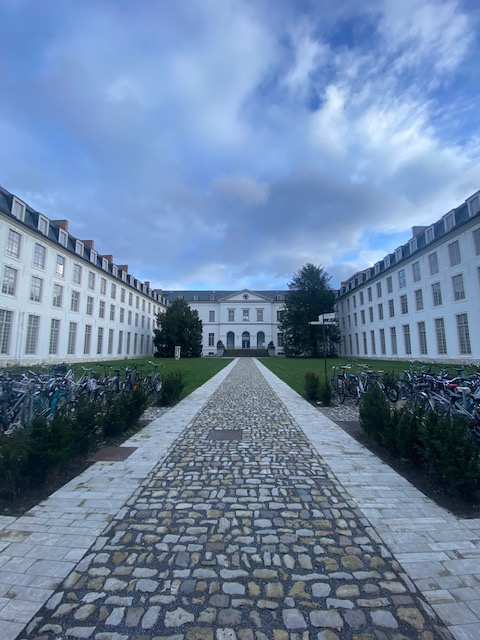
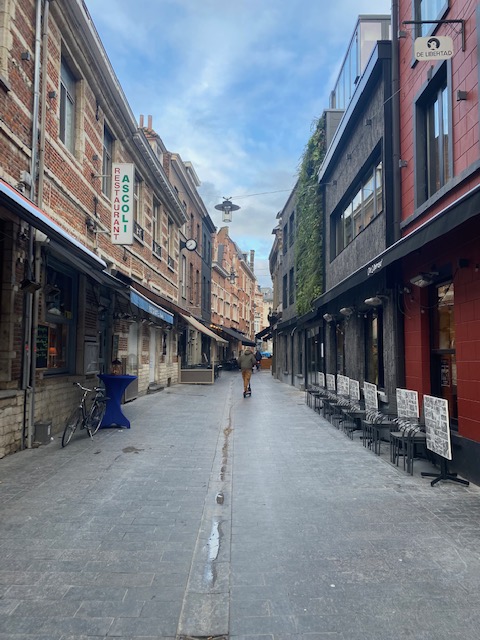
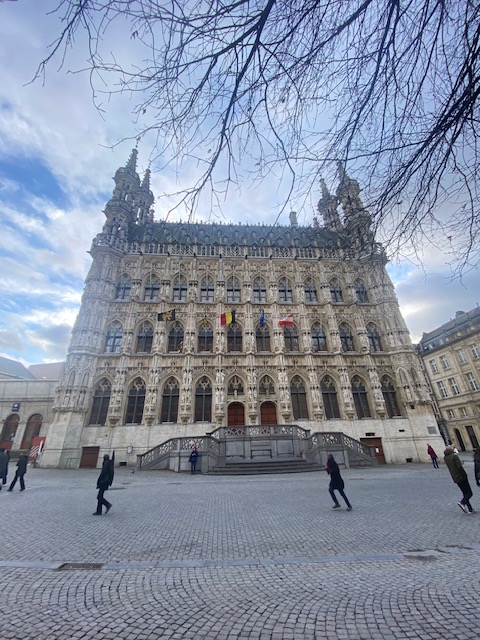
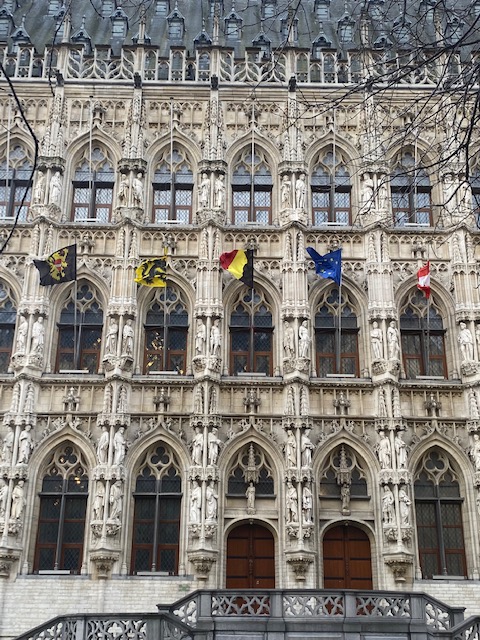
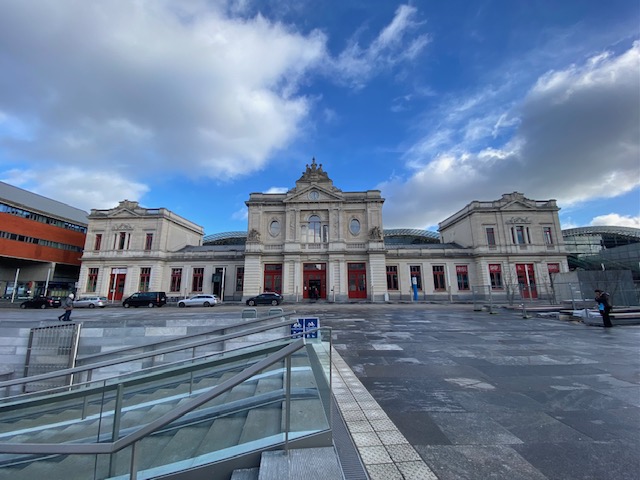
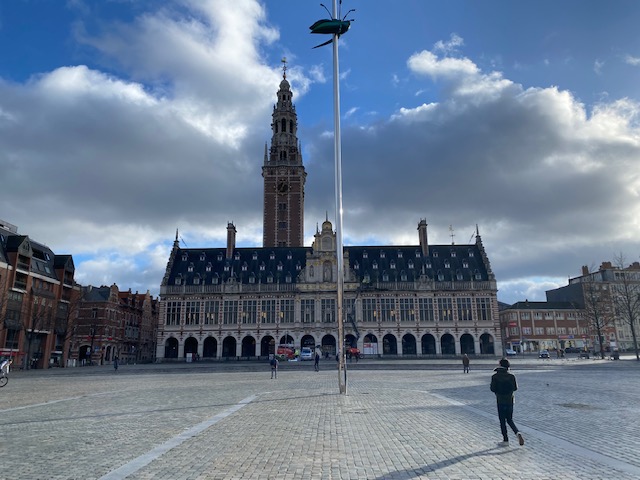
The Great Beguinage
That day’s ‘main event’ was the Great Beguinage.
About 3 hectares (7.5 acres) in size, with some 300 apartments in almost 100 houses, it is one of the largest remaining beguinages in the Low Countries. It stretches on both sides of the river Dyle (Dijle), which splits into two canals inside the beguinage, thus forming an island. Three bridges connect the parts of the beguinage. The complete beguinage is owned by the University of Leuven and used as a campus, especially for housing academics.
A beguinage, from the French term béguinage, is an architectural complex which was created to house beguines: lay religious women who lived in community without taking vows or retiring from the world. They were widows and ever-single ladies.
History of the beguinage
This beguinage originated in the early 1200s. The oldest written documents date back from 1232. A Latin inscription on the church mentions 1234 as founding date. The community is presumably a few decades older. Local historians from the 16th century, including Justus Lipsius, mention 1205 as founding date.
Just like other beguinages in Flanders, the beguinage in Leuven had a first golden age in the 13th century, and difficult times during the religious conflicts in the 16th century.
From the end of the 16th century, and especially after the Twelve Years’ Truce in 1621, the Beguinage had a second flourishing period, culminating near the last quarter of the 17th century and continuing afterwards, albeit in a gradual decline, until the invasion of the anti-religious French Revolutionarists.
The peak in entries occurred with a time span of two generations in the period 1650-1670, when the number of beguines reached 360.
The sudden increase in entries, followed by a long period of gradual decline, explains the homogeneity in the architectural style of the houses, most of which were constructed in the years 1630-1670.
After the invasion of Revolutionary France, the beguinage of Leuven was not sold as bien national (national good) as happened with most monasteries and abbeys.
The properties of the community were, however, confiscated and attributed to the local welfare commission and reorganised as civil almshouses. Beguines were allowed to continue to live in their houses but free rooms were rented to elderly and poor people.
The last priest of the beguine community died in 1977 at the age of 107. The last beguine died in 1988.
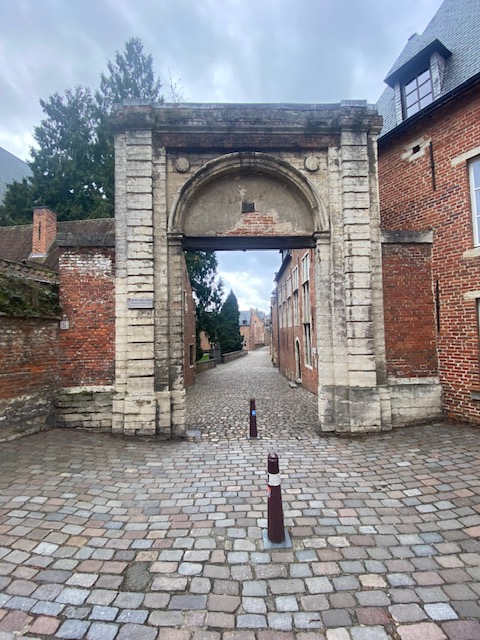
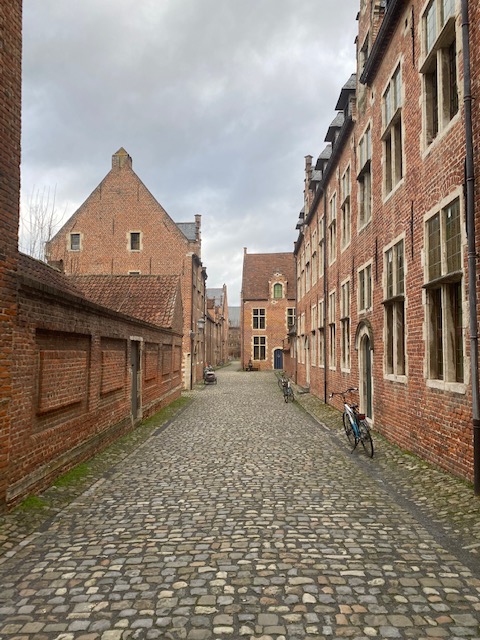
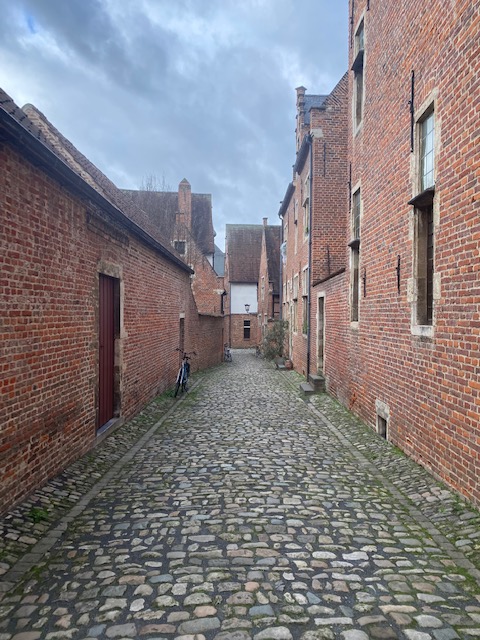
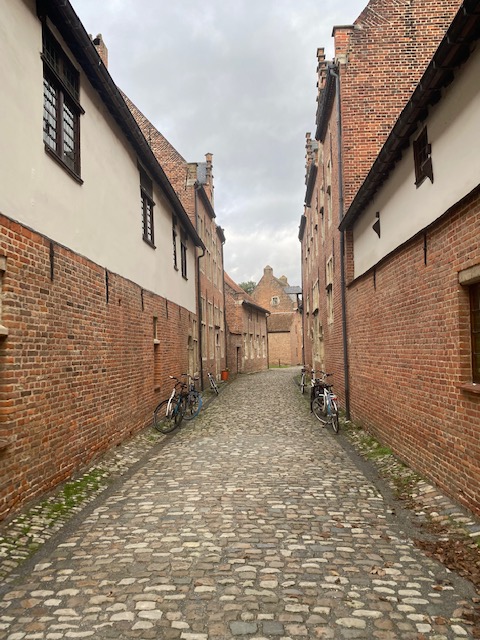
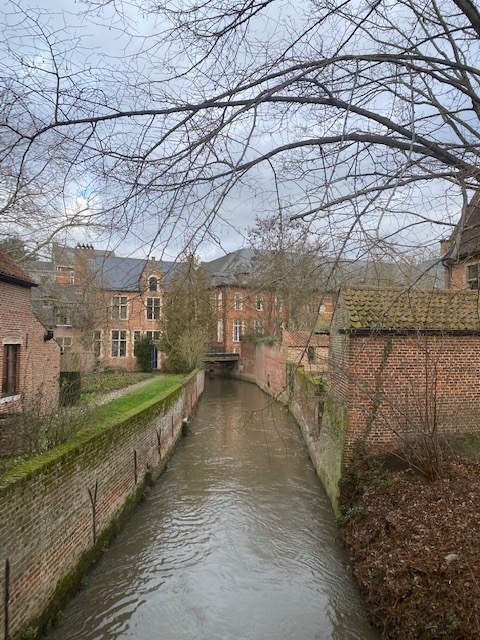
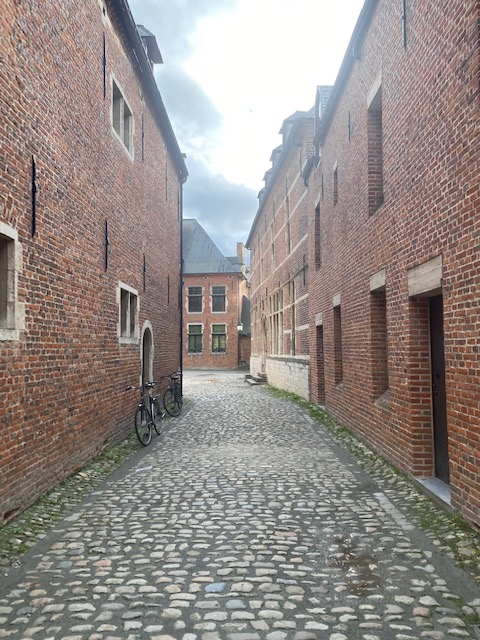
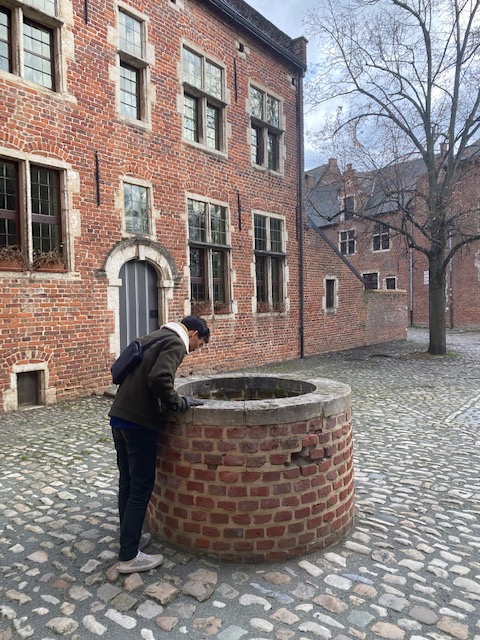
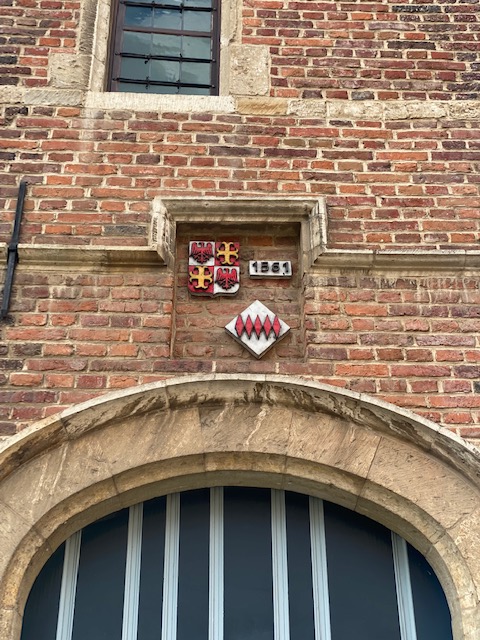
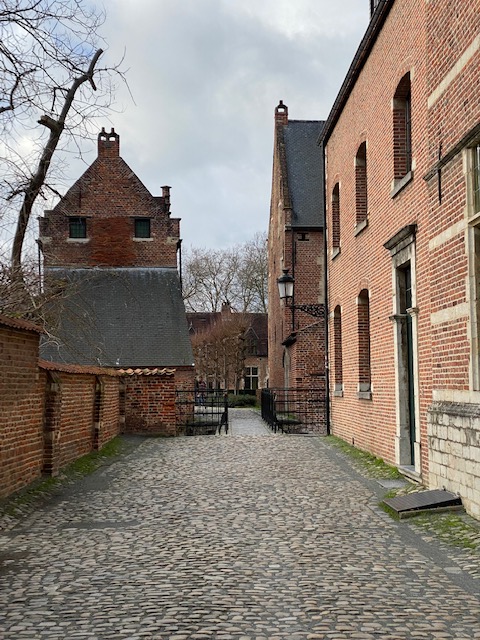
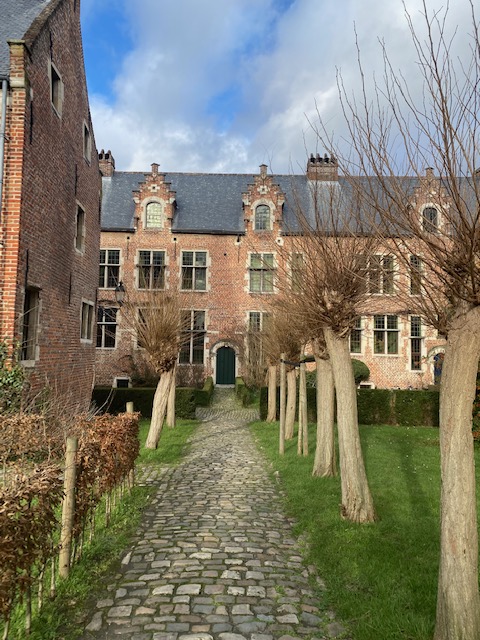
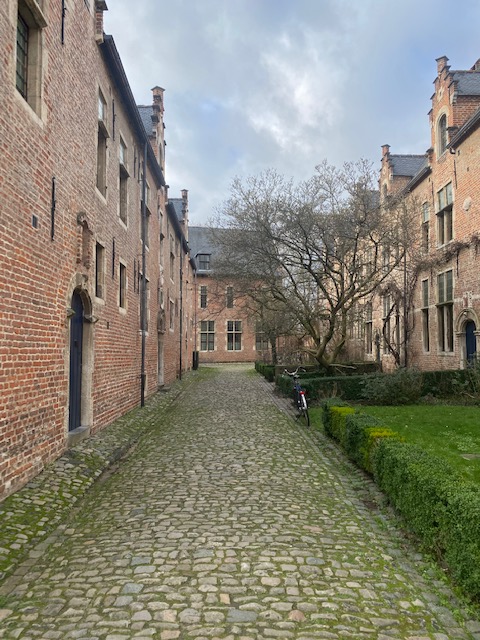
Architecture
The beguinage of Leuven has the appearance of a small town on its own, with houses planned along a network of narrow streets and small squares. This is in contrast to the beguinages of Bruges, Amsterdam or Antwerp, where all houses face a central courtyard.
The only large greenyard, on the left river bank, resulted from the demolition of some houses in the 19th century. Five houses date back from the 16th century, three of which still show timber framing.
The house of Chièvres was built in 1561, in accordance with the will of Maria van Hamal, widow of William de Croÿ, Duke of Aarschot and advisor in political affairs of Emperor Charles V.
Many houses have strikingly few and small windows on the ground floor. The beguines were keen on their privacy. Houses with large windows on the ground floor used to be hidden by an additional wall, as is still the case in other beguinages.
A few houses were replaced or constructed in the 19th century, but far less than in other beguinages, such as in Lier.

26 Comments Add yours